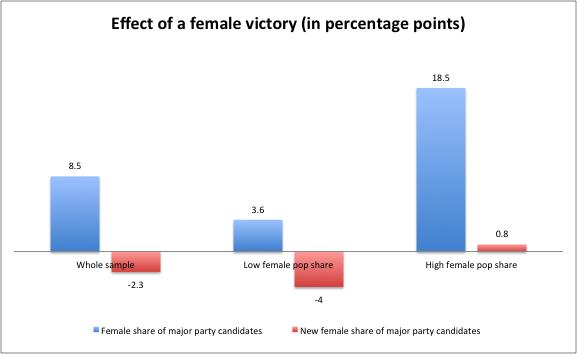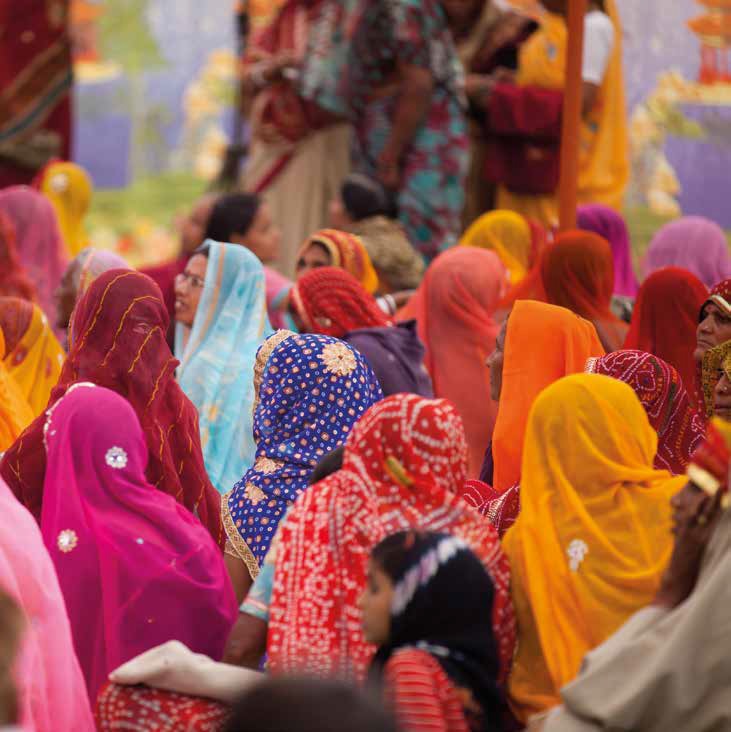Raising the share of women in government has been shown to result in policy choices that more effectively represent the interests of women and children. Yet women account for only 22% of the membership of national parliaments globally. In 2014, they comprised 11% of India’s national legislators, 18% of the United States Congress and 22% of the United Kingdom’s House of Commons. A deficiency of female role models has often been proposed as a reason for the persistence of gender gaps in leadership positions in the corporate or university sectors, although there is limited rigorous evidence of how much they matter. Professor Bhalotra from ISER, Irma Clots-Figueras of Carlos III Madrid and Lakshmi Iyer of Harvard Business School have analyzed role model effects in Indian politics, focusing on competitive elections to state legislative assemblies.
India is the world’s largest democracy and the most rapidly growing economy after China, but close to half of its population – women – continue to have limited voice. It is estimated that there are about 500,000 purposive abortions of the girl fetus in India every year, which is more than the number of girls born in the UK annually. More than a third of women report domestic violence. Instances of rape, dowry deaths and women’s suicides persist at an incredibly high level.
The authors assembled data to track women’s representation in India’s state assemblies over time. Averaging across the period 1980-2007, women comprised only 4.4% of all candidates for state assemblies, and 5.5% of state legislators. So, conditional upon contesting, women have been competitive, exhibiting somewhat stronger chances of winning than men. However candidacy rates are very low. Our research investigated the presence of role model effects by asking whether the event of a woman winning led to increases in women’s candidacy in the same or in neighbouring constituencies, and in the same or in other parties.
In general, if we observe a higher probability that women contest or win in a constituency previously won by a woman, this may reflect the persistence of voter preferences. So as to identify causal effects of women’s electoral victory independently of voter preferences, we analyzed mixed-gender races, effectively comparing areas in which women narrowly won to those in which women candidates narrowly lost to men. We found that a woman winning leads to an increase in the share of women candidates in the next election, but that this is driven by an increased propensity of the incumbent woman to re-contest. This is of substantive significance since 34% of female incumbents and 28% of male incumbents in India do not run for re-election despite there being no term limits.
Importantly, we find no evidence that new women are encouraged to contest. In fact, we find stark differences in the impact of a woman’s electoral victory in places with greater or lesser degree of gender bias. In the North-Western half of the country, where gender bias is known to be deeply entrenched, a woman’s electoral victory is followed by a significant decline in the share of new women candidates in the next election. Consistent with backlash or an intensification of bias against women following women’s electoral victory, we find this decline in new women candidates is larger among parties headed by men, and there is also a decline in the chances of a woman winning. This coheres with some previous evidence of male backlash against women performing non-traditional roles or earning more. In sharp contrast, in the “better half” of India, a woman is more likely to win the next election, albeit the incumbent woman.
We attempted to investigate whether the weak response we see overall might be explained by a shortage of suitable women or by gender-specific constraints (such as family commitments or women’s lesser willingness to compete) but found limited evidence for these “supply side” constraints.
Overall, our results suggest that women’s competitive success in politics does not generate spontaneous increases in women in politics. Policy initiatives may be needed to stimulate entry of new women into the political arena, especially initiatives targeted at changing the attitudes of voters and parties in gender-biased areas.The most common initiative is the use of gender quotas. More than 100 countries now have some kind of quota for women, either in candidate lists or in seats. In India, one-third of local council seats are mandated to be filled by women. A similar bill proposing reservation of a third of all seats in state and national legislatures was passed by the Upper House of parliament in 2010, but has not yet been passed by the Lower House. There is some limited evidence that such gender quotas can reduce voters’ gender bias over long periods of time (Beaman et al, 2009).
How relevant are these findings to countries where bias against women leaders, if it exists, is not as obvious as in India? A recent study for the United States finds, like us, no evidence that women winning spurs the increased participation of women in subsequent elections (Broockman 2013). The share of women in government has increased to an unprecedented level in the 2015 election and it is pertinent to ask if this will spur further candidacy and success among women in the UK, a question on which there is as yet no (causal) evidence.

Notes: States with a low female population share are states with entrenched gender bias (Sen 2003).
References
Beaman, Lori, Raghabendra Chattopadhyay, Esther Duflo, Rohini Pande and Petia Topalova. 2009. “Powerful Women: Does Exposure Reduce Bias?” Quarterly Journal of Economics 124(4): 1497-1540.
Bhalotra, Sonia, Irma Clots-Figueras and Lakshmi Iyer. 2015. “Path-Breakers? Women’s Electoral Success and Future Political Participation.” ISER Working Paper.
Broockman, David E. 2013. “Do Female Politicians Empower Women To Vote or Run for Office? A Regression Discontinuity Approach.” Electoral Studies (34), http://dx.doi.org/10.1016/j.electstud.2013.10.002
Sen, Amartya. 2003. “Missing women—revisited.” BMJ 327:1297.
